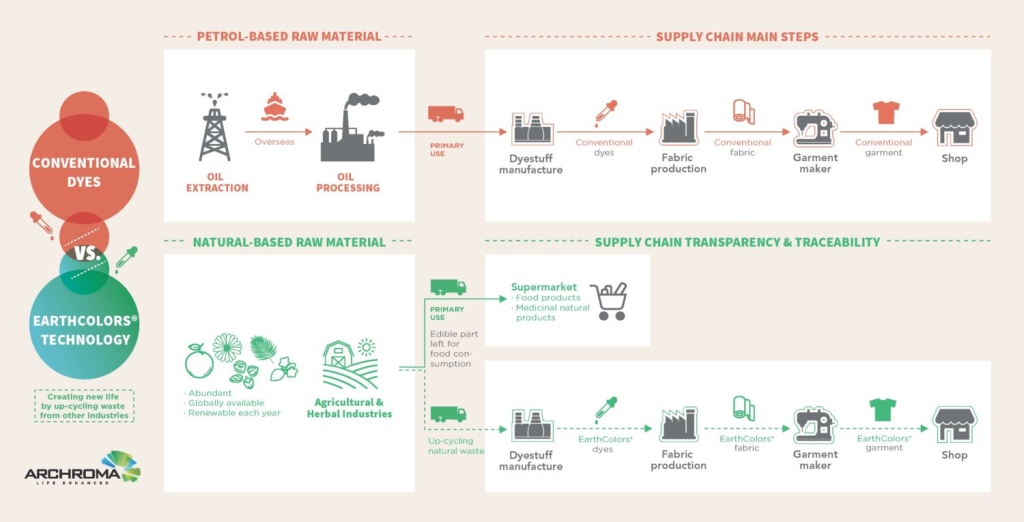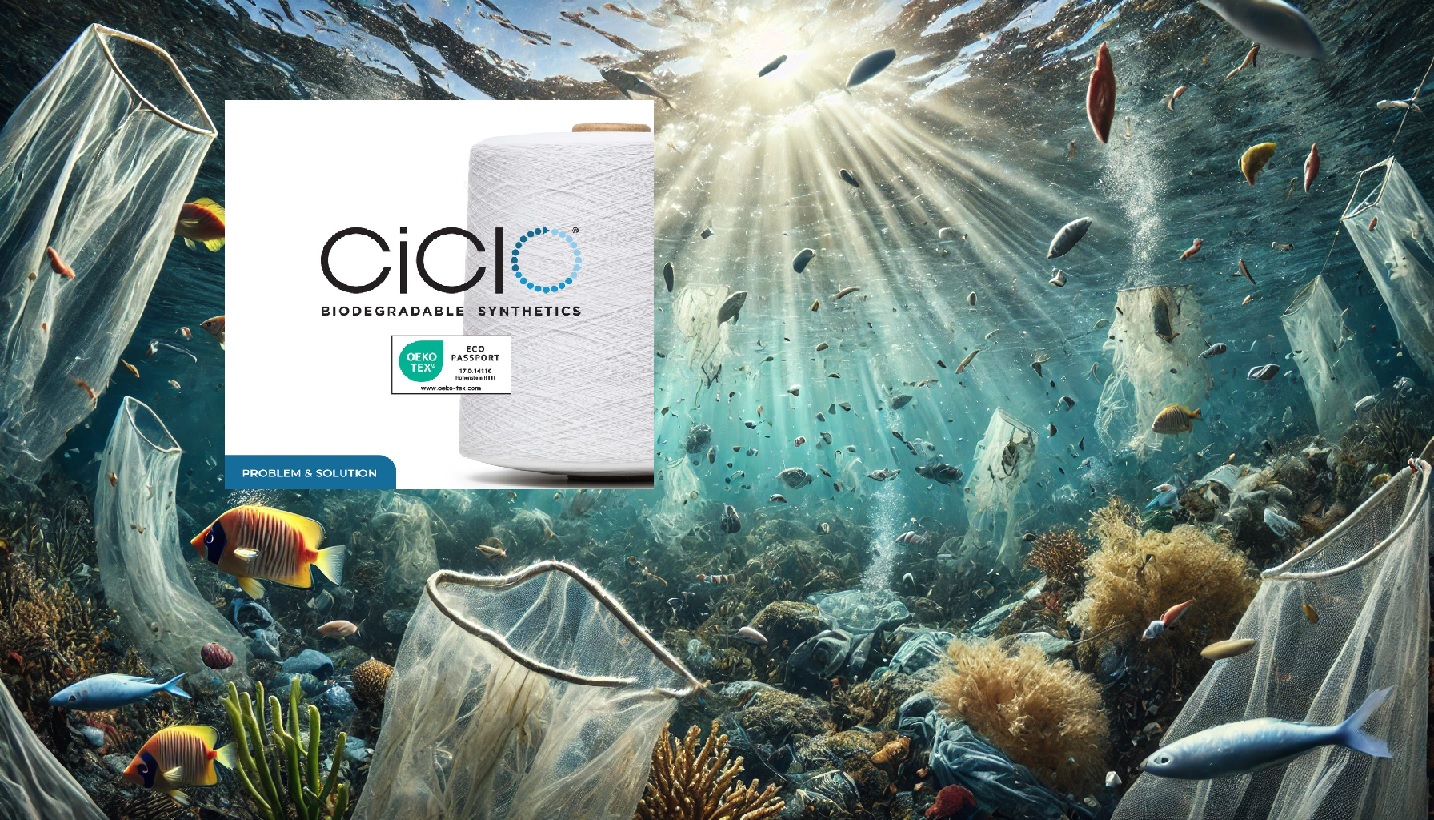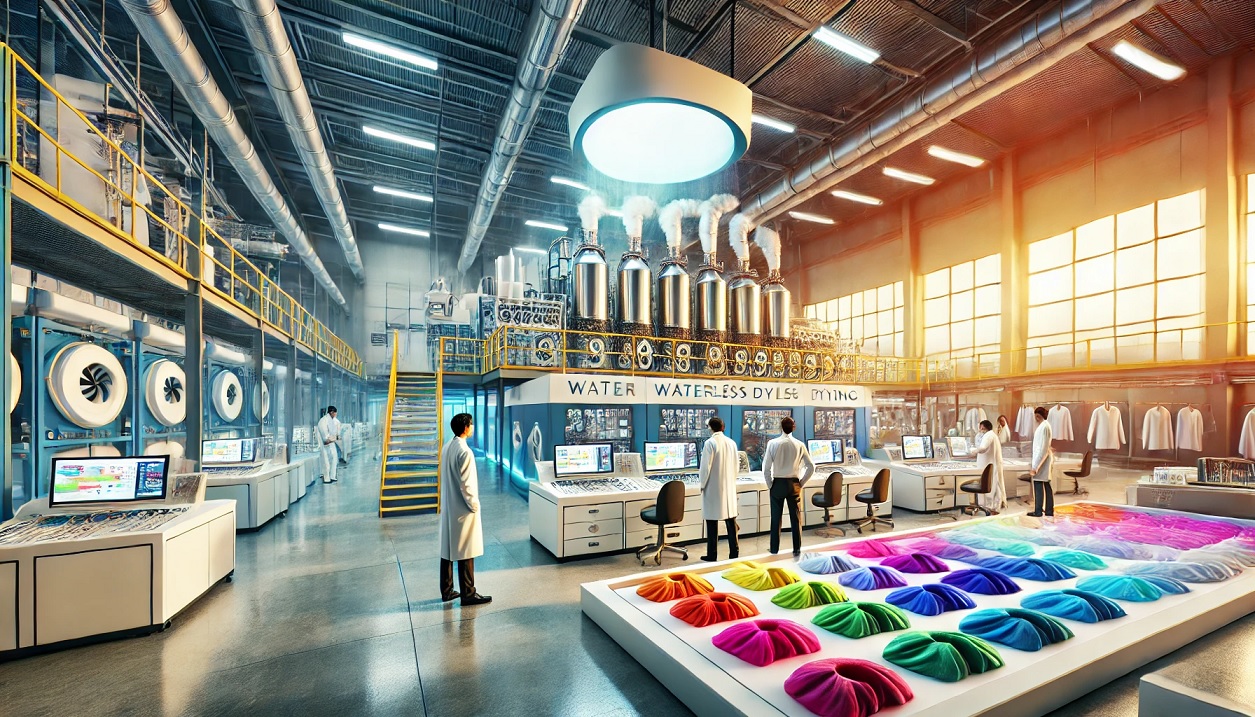Fashion’s vibrant colors come with a hidden environmental cost. Synthetic dyes, while bright and cost-effective, are a major contributor to environmental pollution. These dyes result in extensive water contamination, use up vast quantities of fresh water, and involve harmful chemicals that can seep into and harm ecosystems. As the fashion industry seeks sustainable solutions, the move towards natural dyes represents a promising shift.
The Problem with Synthetic Dyes
Despite their aesthetic appeal, synthetic dyes carry a significant environmental and health toll. The production processes mostly involves toxic chemicals that endanger aquatic life and disrupt natural habitats. This not only compromises the health of our planet but also poses risks to human health and safety. The harsh reality is that our pursuit of fast fashion intensifies these issues, underlining an urgent need for change.
A Sustainable Solution with EarthColors®
Enter EarthColors® by Archroma, a groundbreaking solution that offers a sustainable alternative to conventional dyes. Using non-edible agricultural waste, such as nutshells and leaves, this patented technology creates high-performance dyes that are both beautiful and environmentally responsible. The EarthColors® range showcases how fashion can return to nature without sacrificing quality or style.

EarthColors® offers a variety of natural shades, each derived from different organic sources:
- Diresul® Earth-Oak: Created from almond shells, it imparts rich, warm tones.
- Diresul® Earth-Cotton: Derived from cotton plant residues, offering soft, muted colors.
- Diresul® Earth-Sand: Made using bitter orange residues, producing light, sandy hues.
- Diresul® Earth-Clay: Using beet residues to create deep, robust reds.
- Diresul® Earth-Forest and Earth-Stone: Both utilize residues from the saw palmetto, yielding greens and grays (EarthColors by Archroma).
Innovations in Natural Dyes
The development of EarthColors® illustrates a broader trend in the textile industry towards embracing natural sources. Innovations include using plant-based dyes and exploring biotechnologies like lab-grown pigments. These advancements are crucial as they reduce reliance on harmful chemicals and promote a circular economy. Brands are now exploring ways to scale up these solutions while maintaining cost-effectiveness and meeting global demands (PhysSciTech) (Good On You).
The Future of Fashion
Choosing garments dyed with natural methods like EarthColors® not only supports sustainable practices but also promotes a healthier ecosystem. This approach aligns with a growing consumer awareness and demand for products that are both ethically produced and environmentally friendly. By supporting such innovations, consumers can help drive the fashion industry towards a more sustainable and environmentally conscious future (Environment Co) (The Momentum).
Possible Limitations of Natural Dyes
While natural dyes like EarthColors® offer significant environmental benefits, they also come with certain limitations:
- Color Consistency and Stability: Natural dyes can vary in color intensity and may fade faster than synthetic dyes. This inconsistency can be a challenge for maintaining uniformity in large-scale production.
- Cost and Scalability: Producing natural dyes is often more resource-intensive and costly. It requires larger quantities of raw materials and more labor-intensive processes compared to synthetic dyes.
- Limited Color Range: Natural dyes generally offer a more limited palette of colors. This can restrict fashion designers who are accustomed to the extensive color options provided by synthetic dyes.
- Usage with Different Fabrics: Most natural dyes are suitable primarily for natural fibers like cotton, linen. They are not as effective on synthetic fibers, which limits their applicability across the full range of textile products.
Despite these challenges, the development and adoption of EarthColors® and similar technologies represent crucial steps towards reducing the fashion industry’s environmental footprint. As these technologies evolve, they continue to offer promising alternatives to traditional synthetic dyes, aligning with the increasing consumer demand for sustainable and ethically produced fashion.
Conclusion
The transition from synthetic to natural dyes isn’t just a trend; it’s a necessary shift towards a more sustainable and ethical fashion industry. As EarthColors® and similar innovations take root, they pave the way for a cleaner, greener, and more vibrant world. Each choice we make as consumers casts a vote for the type of world we want to live in. Embrace the change, choose wisely, and contribute to a sustainable future in fashion.



